Origin of ruminal methane
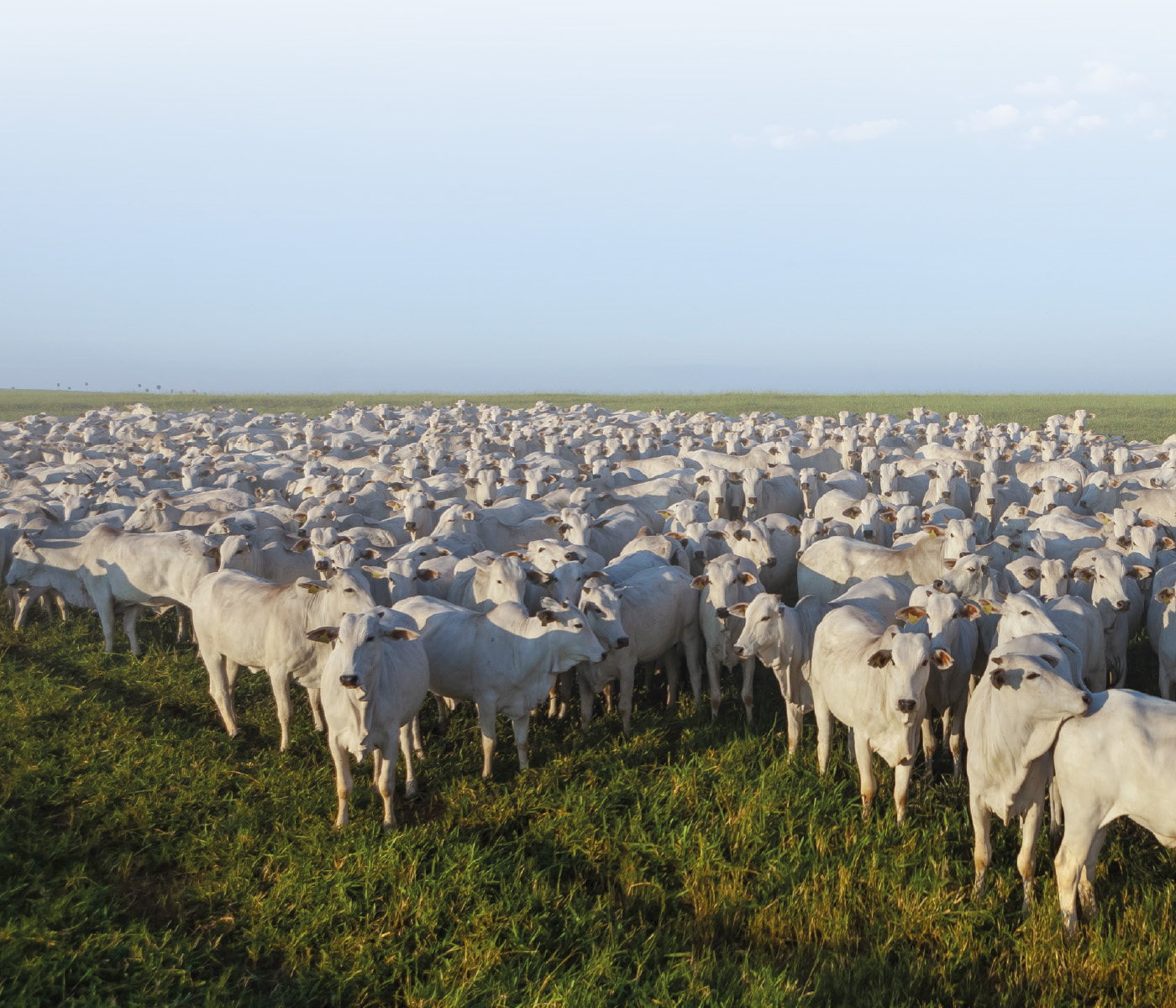 11 Jan 2023
11 Jan 2023
Livestock as a mitigating agent for greenhouse gas emissions
Greenhouse gases and cattle production
Greenhouse gases (GHG), such as carbon dioxide (CO2), methane (CH4) and nitrous oxide (N2O) are responsible for absorbing part of the solar radiation coming from the earth’s surface. Preventing the return of part of this heat from the sun, back into space. This is known as the “greenhouse effect“.

According to the Intergovernmental Panel on Climate Change(IPCC), the average air temperature on the earth’s surface increased by 1.53°C in the years 2006-2015 compared to 1850-1900. The U.S. organization also found an increase of 0.87°C in global average temperature.
Livestock farming is considered by many to be responsible for the greenhouse effect, despite the fact that global GHG emissions associated with it only represent 14.5% of total anthropic emissions (Gerber et al., 2013). Out of this total, methane emissions from livestock alone contribute around 6% of emissions (Gerber et al., 2013).
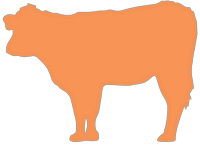
Although it is known that cattle farming contributes to an increase in atmospheric GHG concentrations, this activity may also contribute to reducing the concentration of GHGs. This is because the period of permanence of methane within the atmosphere is lower than other gases that make up this group.
Origin of ruminal methane
CH4 is produced in all anaerobic environments (with low concentrations or lack of oxygen), such as in flooded areas (swamps, irrigated rice production), marine sediments and in animal digestive tracts.
In anaerobic environments, such as the rumen (one of the digestive compartments of ruminants), dietary components (mainly carbohydrates) are digested into simple sugars (mainly glucose). These are then fermented into short-chain fatty acids (SCFAs), CO2 and H2 by microorganisms.
A higher concentration of H2 in the rumen can negatively affect the growth of microbiota and its digestive activity. To reduce excess hydrogen within the ruminal environment, methanogenic bacteria use H2 as an energy source and convert it together with CO2 into methane.
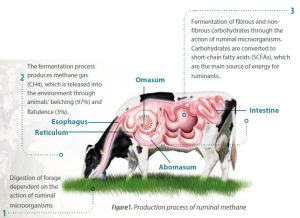
Ruminal methanogenic microorganisms use H2 as an energy source and reduce CO2 to CH4. Contributing towards maximum efficiency in events occurring with the rumen.

On the other hand, the degradation of dietary organic matter (OM) by bacteria, protozoa and fungi requires low concentrations of H2. In order to allow an adequate production of microbial protein and VFAs, which represent the main protein and energy sources for the animal.
Although it is necessary for the ruminal ecosystem, methane production represents an energy loss that varies from 4 to 14%.” Therefore, a reduction in the production of this GHG by livestock is fundamental to improve energy use efficiency in animals. Hence, a reduction in ruminal methane production has both nutritional and environmental significance.
Mitigation strategies
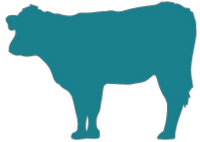
Global ruminant production (especially cattle) plays a relevant role in contributing to GHG mitigation, given the shorter permanence time of CH4 within the atmosphere. In addition to this, there are several possibilities for reducing ruminal methane emissions. Whether these are looked at from a total emissions standpoint (g CH4/animal/year) or in terms of intensity (g CH4/CE, g CH4/kg of DM or g CH4 /kg of meat or milk).
In order for methane to be produced within the rumen, the microorganisms which degrade dietary organic matter must produce H2. As a result, most of the existing CH4 control strategies have focused on reducing H2 production.
Considering that the production of acetate in the rumen generates more H2 than the production of propionate, several strategies used to control methane production involve the reduction of acetate production and aim to increase propionate production within the ruminal environment.
The possibilities of stimulating H2 use for other purposes (acetate production and reduction of nitrate and sulfate), as well as the direct inhibition of methanogenic organisms have also been evaluated. Aiming to mitigate ruminal methane production.
In this sense, several strategies for the control ruminal CH4 production are based on the alteration of ruminal fermentation through the reduction of acetate production and an increased production of propionate by each mol of fermented glucose. As well as in the consumption of H2 and the direct inhibition of methanogenic organisms.
Technologies used to control methanogenesis:
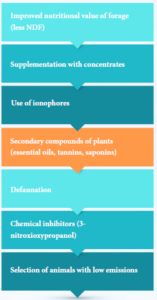
Some of these strategies reduce methane emissions while others only reduce its intensity.
In recent decades, Brazil’s livestock has undergone profound transformations, marked by the adoption of different technologies. Most of these are related with feed, and they include:
These factors indicate that Brazilian livestock has the potential to contribute to the reduction of GHG emissions, especially that of ruminal methane.
Well-managed pastures have the ability to sequester and fix C in the soil. Contributing to reduce carbon accumulation in the atmosphere. As well as allowing a reduction in GHG emission intensity by reducing slaughter age, obtaining greater weight gains, higher stocking rates and consequently higher production per area.
Special attention must be given to additives that promote methane emission reductions or those that contribute to decreasing the intensity of its production. This is due to the reductions in dry matter consumption or digestion of dietary components, as its production reduces animal performance.
Source: This article was originally published as a portuguese content in Nutrinews Brasil 4th Trimester 2022
Subscribe now to the technical magazine of animal nutrition
AUTHORS

Hybrid Rye Potential in Laying Hen Feed Rations
Gwendolyn Jones
A day in the life of phosphorus in pigs: Part I
Rafael Duran Giménez-Rico
Use of enzymes in diets for ruminants
Braulio de la Calle Campos
Minerals and Hoof Health in the Pregnant Sow
Juan Gabriel Espino
Impact of Oxidized Fats on Swine Reproduction and Offspring
Maria Alejandra Perez Alvarado